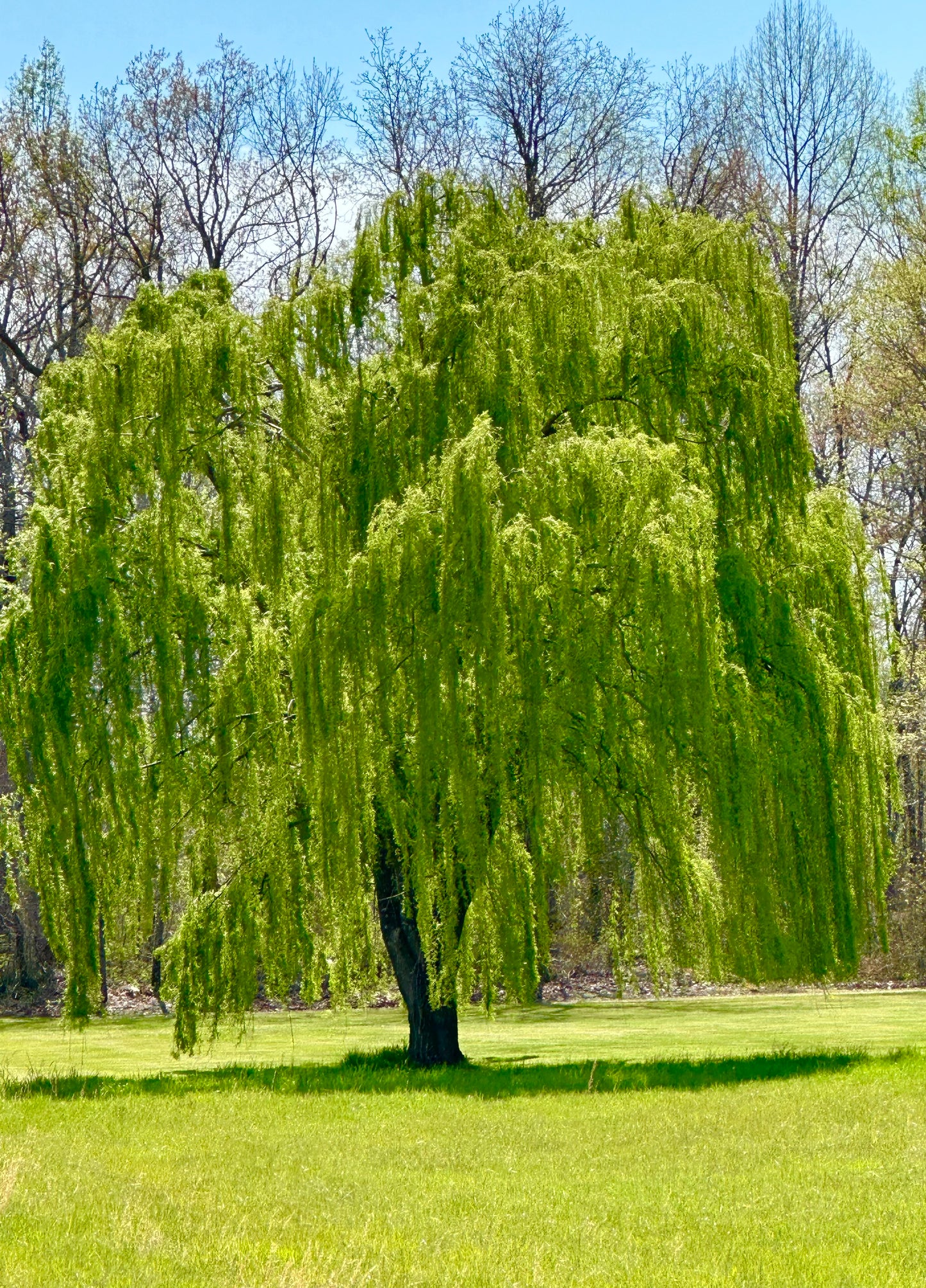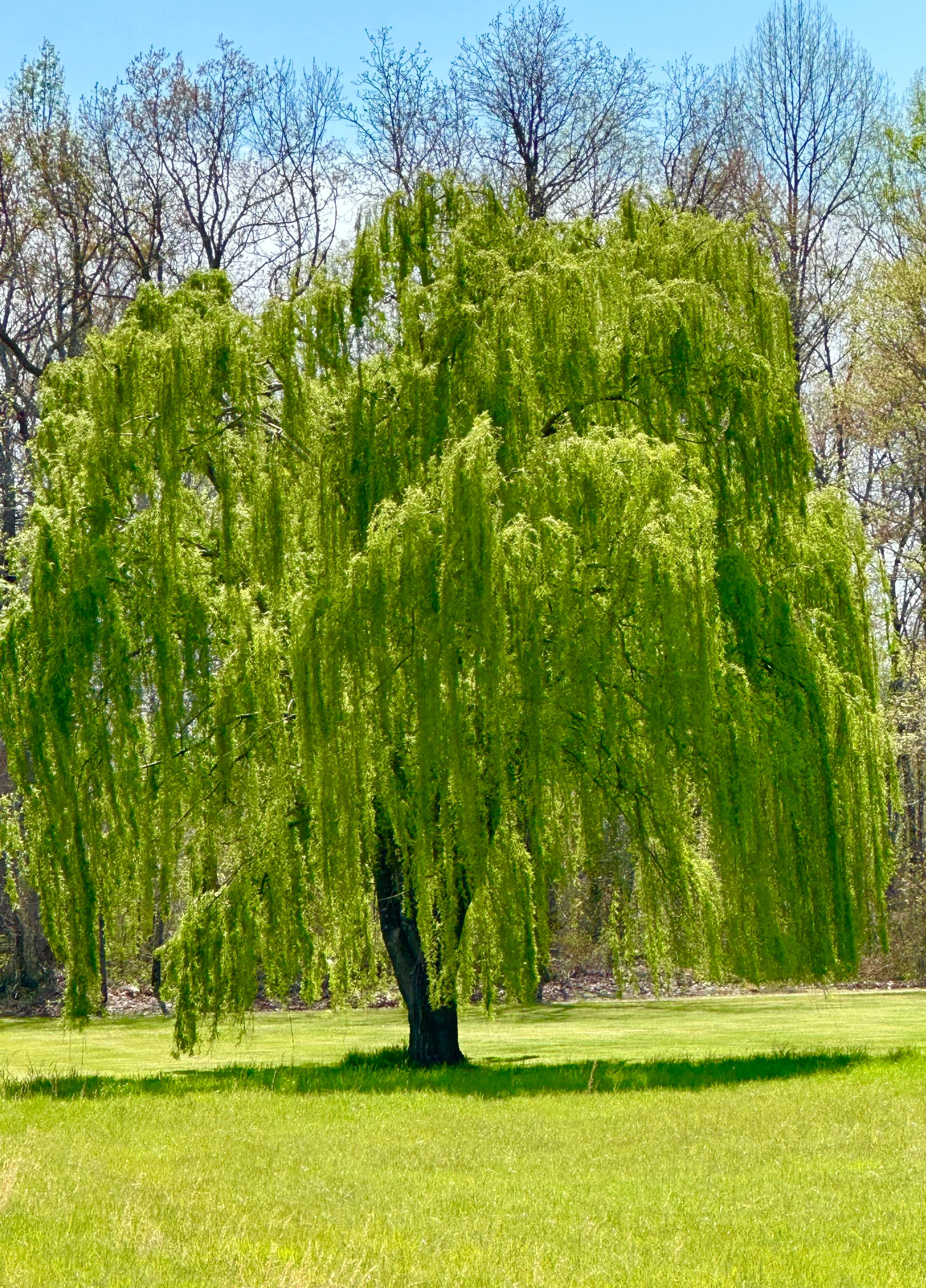


Salix babylonica, or the weeping willow, is a whimsical giant recognized by its crown of sweeping and low hanging branches. Its long and slender leaves are an early indicator of spring with its yellow twigs and green leaves. It is one of the first trees to sprout new leaves in the spring and the first to lose leaves in the fall. This species of willow is native to the northern area of China, but is now a well known tree found throughout North America. The tree is an easy to grow species of tree that easily takes root, can grow up to eight feet per year, and can easily reach up to forty feet in height and thirty-five feet in width under the right conditions. There is a vast variety of the tree with over 400 species. In the Spring they produce what are referred to as catkins. These are silver tinged green foliage that contain flowers. In the fall the weeping willows lance shaped leaves turn to a golden shade.
Hardy Plant Zone For Weeping Willow
Although the tree is expected to grow well in hardiness zones 6-8 it is well know to also grow in hardiness zones of 4-9. Mature Height Under good conditions the weeping will can reach heights of 30 - 40 feet with a spread of about 35 feet. Soil Requirements The tree is a highly adaptable tree. It likes rich and moist soil, but it is quite versatile and can also tolerate alkaline, acidic, sandy loam, and well drained soils. Although they are drought tolerant, they prefer growing next to water sources such as creeks, rivers, and ponds.Growing Speed For Weeping Willow
The weeping willow is one of the fasted growing shade trees. Under normal situations it can grow approximately two feet per year, but have been known to grow up to eight feet in a year. Their growth rate begins slow, but once they get to a height of about ten feet their growth rate speeds up. Characteristics and Appearance The tree has a personality all of its own. With its rounded crown and weeping and flowing branches it is definitely a majestic presence in the yard. Some of the branches can grow so long that they can touch the ground. The leaves are lance shaped and turn to a yellow hue in the Spring. The trunk has rough and gray bark that is marked by branching ridges which result in deep furrows. This tree has been a favorite among tree lovers since they were first discovered.Uses in Landscaping With The Weeping Willow
The tree is the perfect shade tree for any yard. With its great height, long flowing branches and dense foliage it provides a great shade area for sitting beneath during hot summer months. It can easily grow anywhere in the yard, but absolutely loves water. Placing one next to a river, creek, or a pond may not only aid in its growth rate, but enhances the yard with a magical feel. Planting them in areas of the yard where you have water issues, such as low spots that tend to puddle, is a perfect solution to the problem at hand. They can be grown individually or in groves for an even more dramatic effect. The weeping willow is one of the most recognizable of trees. With its sweeping branches and weeping canopy the tree is a favorite to people who desire a majestic and whimsical feel to their property or a focal point of beauty. It is a favorite among children for climbing and hiding within its dense canopy and dropping branches.
- Choosing a selection results in a full page refresh.
- Opens in a new window.



